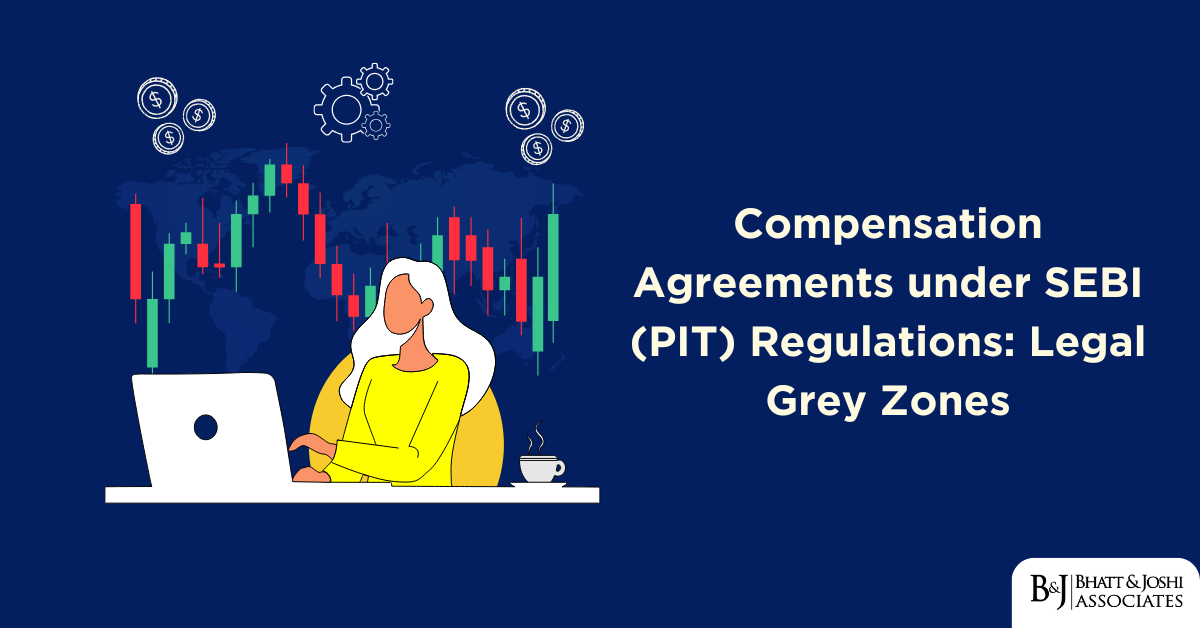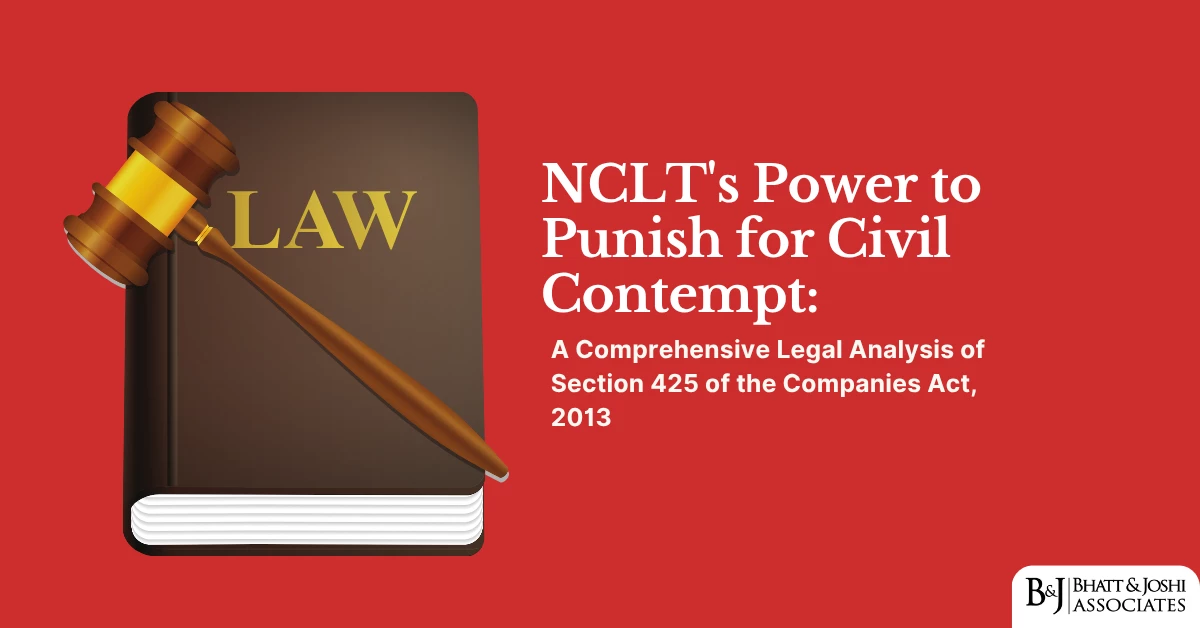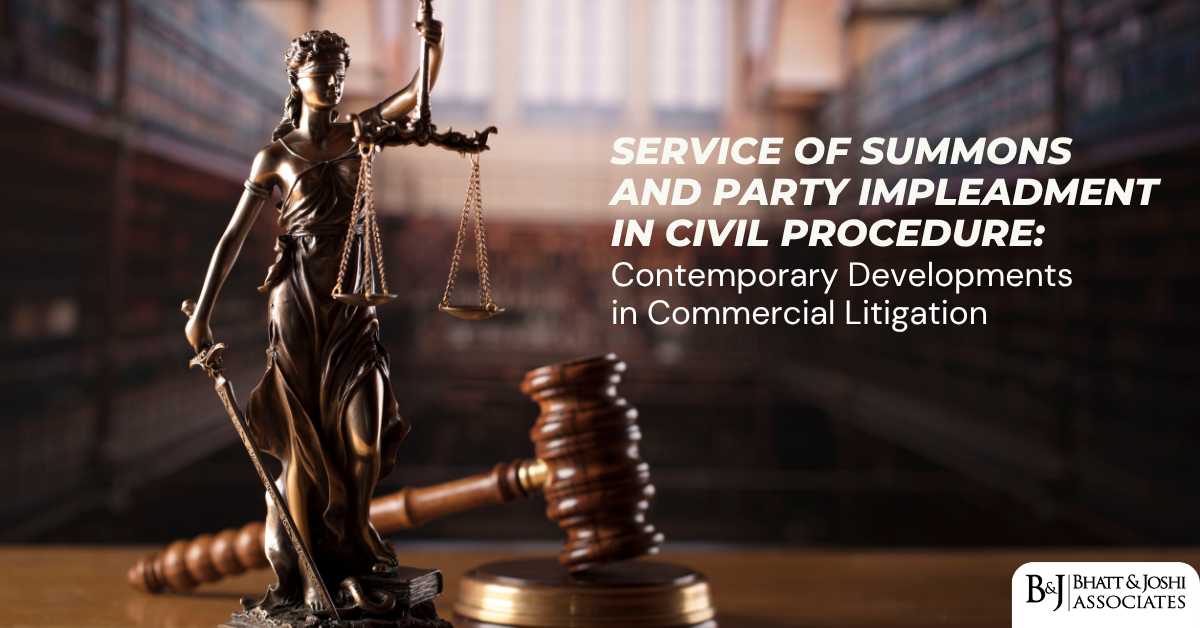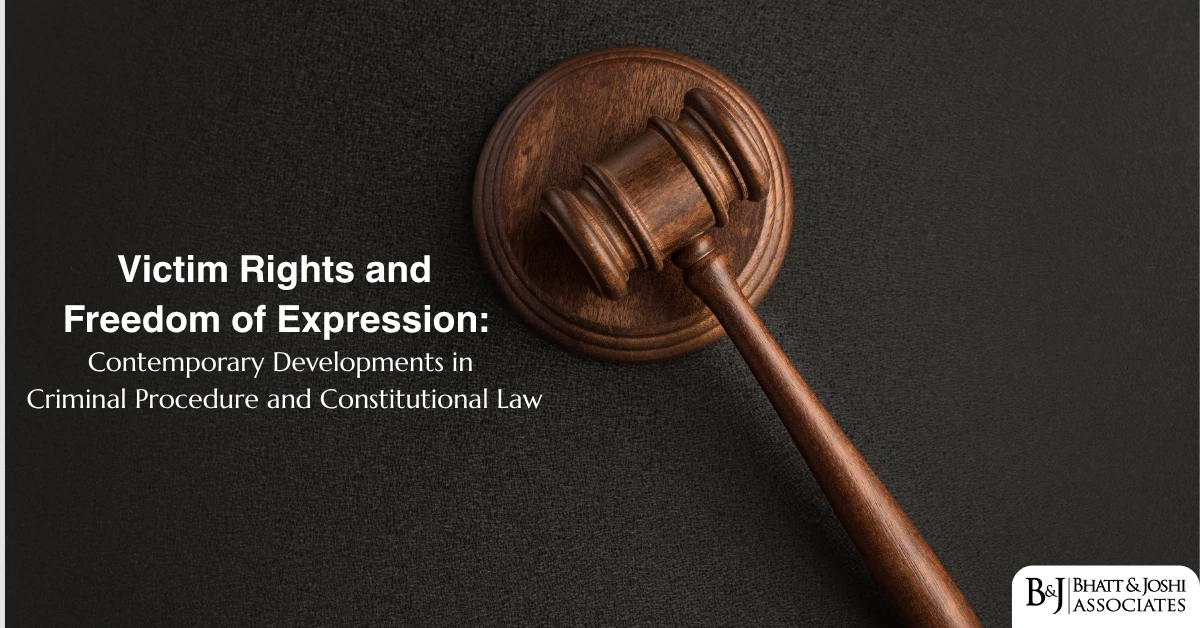Introduction
The regulation of compensation agreements involving key managerial personnel, promoters, and significant shareholders represents one of the most challenging and contentious areas within India’s securities regulatory framework. These agreements, often private in nature but with potentially significant implications for corporate governance and market integrity, occupy an ambiguous territory within the Securities and Exchange Board of India (Prohibition of Insider Trading) Regulations, 2015 (PIT Regulations). The fundamental tension arises from the dual nature of such agreements—they simultaneously function as legitimate components of corporate compensation strategy and as potential vehicles for creating information asymmetries or conflicts of interest that the PIT Regulations seek to prevent. This article examines the evolution of regulatory approaches to compensation agreements under the PIT Regulations, analyzes the significant legal ambiguities that persist, evaluates landmark judicial interpretations that have attempted to navigate these grey zones, and proposes potential reforms to enhance regulatory clarity while preserving legitimate business flexibility.
The Regulatory Framework: Evolution and Current State
Historical Development of PIT Regulations Regarding Compensation Agreements
The regulation of compensation agreements within the insider trading framework has evolved significantly over the past three decades in India. The initial SEBI (Insider Trading) Regulations, 1992, contained minimal explicit references to compensation arrangements, focusing primarily on more direct forms of insider trading through securities transactions.
The watershed moment came with the comprehensive overhaul resulting in the SEBI (Prohibition of Insider Trading) Regulations, 2015. These regulations, implemented based on the recommendations of the Justice N.K. Sodhi Committee, adopted a principles-based approach with broader definitions of “insider,” “unpublished price sensitive information” (UPSI), and “connected persons.” This expanded approach created an implicit regulatory perimeter that potentially encompassed various compensation agreements not previously considered within the insider trading regulatory framework.
The 2015 PIT Regulations remain the primary regulatory instrument governing this area, though they have undergone several amendments to address emerging issues. Notably, the SEBI (Prohibition of Insider Trading) (Amendment) Regulations, 2018, and subsequent amendments in 2019 and 2020 have progressively clarified certain aspects of compensation agreement regulation while leaving others in interpretative limbo.
Current Regulatory Approach to Compensation Agreements under the PIT Regulations
The current regulatory approach to compensation agreements under the PIT Regulations revolves around several key provisions that create the framework within which these agreements must operate:
Regulation 2(1)(n) defines “unpublished price sensitive information” as “any information, relating to a company or its securities, directly or indirectly, that is not generally available which upon becoming generally available, is likely to materially affect the price of the securities.” This expansive definition potentially encompasses information about special compensation arrangements that might influence investor perceptions of management incentives or corporate governance.
Regulation 3(1) establishes the foundational prohibition: “No insider shall communicate, provide, or allow access to any unpublished price sensitive information, relating to a company or securities listed or proposed to be listed, to any person including other insiders except where such communication is in furtherance of legitimate purposes, performance of duties or discharge of legal obligations.” This provision creates particular challenges for compensation agreements that may involve the sharing of sensitive information with external parties during negotiation or implementation.
Regulation 4(1) further prohibits trading while in possession of UPSI: “No insider shall trade in securities that are listed or proposed to be listed on a stock exchange when in possession of unpublished price sensitive information.” This provision becomes relevant when compensation agreements include equity components or are linked to trading activities.
Regulation 7 establishes disclosure requirements for certain transactions, potentially including compensation arrangements that involve securities. Specifically, Regulation 7(2)(a) requires: “Every promoter, member of the promoter group, designated person and director of every company shall disclose to the company the number of such securities acquired or disposed of within two trading days of such transaction if the value of the securities traded…exceeds ten lakh rupees or such other value as may be specified.”
The 2019 amendments introduced Regulation 7A, requiring disclosure of certain additional agreements: “Every listed company shall specify the trading window for monitoring the trading of designated persons and their immediate relatives, and for this purpose, the company shall formulate a code of conduct to regulate, monitor and report trading by such persons… Such code of conduct shall incorporate additional disclosures regarding off-market inter se transfers between insiders and any trading plan pursuant to which trades may be carried out with prior approval from the compliance officer.”
SEBI Circular SEBI/HO/ISD/CIR/P/2021/19 dated February 9, 2021, further clarified the disclosure requirements specifically in relation to compensation agreements: “Any agreement which is linked to future performance of the company, market price of the securities, or fulfilment of certain conditions, between a public shareholder and the promoter/promoter group/director/key managerial personnel of the company, shall be disclosed to the stock exchanges for dissemination if the value or impact of such agreement exceeds the lower of: (a) 2% of the annual turnover as per the last audited financial statements; or (b) 2% of the market capitalization as on the date of the agreement.”
Despite these provisions, significant ambiguity persists regarding which compensation agreements fall within the regulatory perimeter, what specific disclosures are required, and how these agreements should be structured to ensure compliance while maintaining commercial confidentiality and flexibility.
Typology of Compensation Agreements under PIT Regulations: Regulatory Classification and Challenges
Compensation agreements under PIT Regulations typically fall into several distinct categories, each presenting unique regulatory challenges:
Performance-Based Compensation Linked to Non-Public Metrics
These agreements provide additional compensation to executives or key employees based on performance metrics not regularly disclosed to the market. Examples include strategic milestones, operational targets, or non-GAAP financial measures.
The regulatory challenge arises because knowledge of these targets and progress toward them could constitute UPSI if material to investor decision-making. The Infosys Ltd v. SEBI (SAT Appeal No. 478 of 2020) case highlighted this issue when SAT observed: “Performance metrics in senior executive compensation agreements that deviate from publicly disclosed financial targets may constitute UPSI if they provide insight into aspects of the company’s expected performance not otherwise available to market participants. The mere existence of differential performance metrics may itself be material information requiring disclosure.”
Side Letters and Supplemental Compensation Arrangements
These agreements provide additional benefits to key personnel beyond standard publicly disclosed compensation packages. They may include guaranteed bonuses, tax indemnifications, post-employment consulting arrangements, or other special benefits.
The Supreme Court addressed this category in SEBI v. Abhijit Rajan (Civil Appeal No. 563 of 2022), holding: “Supplemental compensation arrangements between promoters and key managerial personnel must be evaluated for materiality under Regulation 2(1)(n) based on their potential impact on investment decisions. The determinative factor is not the absolute value of the arrangement but whether knowledge of its existence would influence investors’ perception of management incentives, corporate governance quality, or expected performance outcomes.”
Equity-Based Compensation with Unique Terms
These arrangements include stock options, restricted stock units, or other equity instruments with vesting conditions, exercise provisions, or other terms that differ from standard plans disclosed in annual reports.
SEBI addressed this category in its order against Satyam Computer Services Ltd. (May 22, 2018), finding: “Special equity compensation arrangements that deviate from the company’s publicly disclosed standard practices constitute material information requiring proper disclosure. The fundamental principle of fair disclosure requires transparency regarding non-standard equity incentives that might materially influence management behavior or indicate corporate expectations not otherwise communicated to the market.”
Compensation Recovery or “Clawback” Arrangements
These agreements provide mechanisms for companies to recover compensation previously paid under certain conditions such as financial restatements, misconduct, or failure to meet long-term performance goals.
The Karnataka High Court in Mindtree Ltd. v. SEBI (W.P. No. 6894 of 2021) noted: “Clawback provisions that materially deviate from industry standards or that are triggered by conditions suggesting potential governance concerns may constitute UPSI if their existence or activation would likely influence investment decisions. The materiality threshold must be evaluated from the perspective of a reasonable investor rather than based on accounting materiality alone.”
Promoter Guarantee Fee Arrangements
These agreements provide compensation to promoters for extending personal guarantees for corporate borrowings or other obligations.
In its order against Raymond Ltd. (January 13, 2020), SEBI held: “Guarantee fee arrangements between listed entities and their promoters represent related party transactions that require disclosure under SEBI’s LODR Regulations. Additionally, where such arrangements depart from market-standard terms or represent significant financial exposure, they may constitute UPSI under the PIT Regulations requiring appropriate safeguards against information asymmetry.”
Third-Party Compensation Arrangements
These agreements involve payments from third parties (such as private equity investors, joint venture partners, or acquiring companies) to executives or directors that may influence their decision-making regarding corporate actions.
SEBI addressed this category comprehensively in its order against Satyam Computer Services Ltd. (May 22, 2018), stating: “Third-party compensation arrangements with persons who exercise significant influence over corporate decisions represent particularly problematic structures under the PIT Regulations when not fully disclosed. Such arrangements create inherent conflicts of interest and information asymmetries that undermine market integrity and fair disclosure principles.”
Legal Grey Zones: Areas of Persistent Regulatory Ambiguity
Despite the evolving regulatory framework, several critical areas remain characterized by significant legal uncertainty, creating compliance challenges for companies and potential enforcement inconsistencies:
Materiality Threshold for Disclosure Requirements
The determination of materiality represents perhaps the most pervasive grey zone in the regulation of compensation agreements. Regulation 2(1)(n) defines UPSI with reference to information “likely to materially affect the price of the securities,” but provides limited guidance on how to assess this likelihood or materiality.
SEBI’s 2021 circular attempts to establish bright-line thresholds (2% of turnover or market capitalization), but these apply only to agreements between public shareholders and promoters/KMPs, leaving considerable ambiguity for other compensation arrangements.
In Reliance Industries Ltd. v. SEBI (SAT Appeal No. 447 of 2020), SAT acknowledged this challenge: “The materiality standard under the PIT Regulations necessarily involves a predictive judgment about market impact that reasonable persons might assess differently. While quantitative thresholds provide some objective guidance, qualitative factors including the nature of the information, strategic significance, and potential signaling effect must also be considered. This inevitably leaves a grey zone where reasonable minds may disagree regarding materiality determination.”
Timing of Disclosure Requirements
When compensation agreements must be disclosed presents another area of significant ambiguity. Regulation 7 establishes disclosure timelines for securities transactions, but the appropriate timing for disclosure of compensation agreements with more complex structures remains unclear.
SEBI Circular SEBI/HO/CFD/CMD1/CIR/P/2019/140 dated November 21, 2019, requires disclosure of material events “as soon as reasonably possible and not later than twenty-four hours from the occurrence of event or information.” However, determining when a compensation agreement “occurs” presents interpretive challenges—is it upon initial discussion, formal approval, signing, or satisfaction of contingencies?
The Delhi High Court addressed this issue in Fortis Healthcare Ltd. v. SEBI (W.P. No. 7642 of 2020), observing: “The timing requirement for disclosure of compensation arrangements must be interpreted purposively to fulfill the objective of market symmetry of information. Where agreements evolve through multiple stages with increasing certainty, companies should consider whether material terms have reached sufficient definiteness to warrant disclosure, even if formal execution remains pending.”
Chinese Walls and Information Barriers
The extent to which companies can manage UPSI related to compensation agreements through internal information barriers represents another significant grey zone. Regulation 3(5) provides that communication of UPSI may be permitted in connection with a transaction that would trigger disclosure requirements, if the board of directors ensures appropriate confidentiality and non-trading restrictions.
However, the effectiveness requirements for such Chinese walls remain ambiguous, particularly in the context of compensation discussions that necessarily involve board members and senior executives who regularly possess other UPSI.
In ICICI Bank Ltd. v. SEBI (SAT Appeal No. 147 of 2018), the tribunal noted: “Chinese walls in the context of compensation discussions present particular challenges given the inherent overlap between decision-makers on compensation matters and persons with access to broader corporate UPSI. While the regulations contemplate such information barriers, their practical implementation requires careful structuring that may be difficult to achieve with the rigidity necessary for full regulatory compliance.”
Treatment of Contingent or Performance-Based Arrangements
The regulatory treatment of contingent compensation arrangements presents particular ambiguity. When an agreement establishes potential future compensation based on performance metrics or other future conditions, determining when information about the agreement or progress toward contingencies becomes UPSI involves complex judgment.
The Bombay High Court addressed this issue in Sun Pharmaceutical Industries Ltd. v. SEBI (W.P. No. 3194 of 2022), holding: “Contingent compensation arrangements present a disclosure timing continuum rather than a single disclosure point. The existence of the contingent arrangement itself may constitute material information warranting initial disclosure, while subsequent information regarding progress toward satisfying contingencies may independently require disclosure as it emerges. This creates an ongoing assessment obligation that lacks bright-line certainty.”
Legitimate Business Purpose Exception
Regulation 3(1) permits communication of UPSI for “legitimate purposes,” but the boundaries of this exception in the compensation context remain poorly defined. The necessity of involving external advisors, board committees, or compensation consultants in structuring and implementing compensation agreements creates particular challenges in managing UPSI flow.
SEBI’s Guidance Note dated July 13, 2019, attempts to address this by stating: “The term ‘legitimate purpose’ shall include sharing of unpublished price sensitive information in the ordinary course of business by an insider with partners, collaborators, lenders, customers, suppliers, merchant bankers, legal advisors, auditors, insolvency professionals or other advisors or consultants, provided that such sharing has not been carried out to evade or circumvent the prohibitions of these regulations.”
However, this guidance still leaves considerable ambiguity regarding when compensation discussions cross from legitimate business purposes into prohibited information sharing, particularly given the inherent commercial sensitivity of such discussions.
Landmark Judicial Interpretations Navigating the Grey Zones
Several landmark judicial decisions have attempted to navigate these regulatory grey zones, providing important interpretive guidance while sometimes revealing the limitations of the current framework:
Manoj Gaur v. SEBI (2021): Establishing the Materiality Framework
This SAT decision represents perhaps the most comprehensive judicial examination of materiality standards for compensation agreements under the PIT Regulations. The case involved undisclosed performance-based compensation agreements for senior executives of Jaiprakash Associates Limited that included targets differing from those publicly disclosed.
SAT established a multi-factor materiality framework: “Determining whether a compensation arrangement constitutes UPSI requires examination of: (1) Quantum significance relative to standard compensation; (2) Divergence from publicly disclosed incentive structures; (3) Potential alignment or misalignment with shareholder interests; (4) Signaling effect regarding corporate priorities or expectations; and (5) Nature of performance metrics as indicators of non-public corporate expectations or strategies. No single factor is determinative, and the assessment must consider the total mix of information available to investors.”
This decision provided valuable guidance while acknowledging the inherently contextual nature of materiality determinations.
NSE v. SEBI (2022): Clarifying Disclosure Timing Requirements
This Supreme Court decision addressed disclosure timing requirements in the context of supplemental compensation arrangements between the National Stock Exchange and its former CEO. The Court held:
“The disclosure obligation for compensation arrangements arises when material terms have been sufficiently finalized to constitute meaningful information, even if contingencies remain or formal execution is pending. The appropriate disclosure timing requires balancing premature disclosure of indefinite arrangements against delayed disclosure of arrangements whose essential terms have crystallized. This balance must be resolved in favor of earlier disclosure when the arrangement’s existence would influence investment decisions, even if precise financial impacts remain contingent.”
This interpretation established a “substantial finalization” standard that prioritizes timely disclosure while recognizing the evolutionary nature of compensation agreements.
SEBI v. HLL Lifecare Ltd. (2020): Defining Legitimate Business Purpose
In this case, the Kerala High Court examined the scope of the “legitimate business purpose” exception in the context of compensation discussions involving external consultants and advisors. The Court provided important boundary guidance:
“The legitimate business purpose exception permits necessary information sharing to implement proper corporate governance regarding compensation matters, including appropriate involvement of external advisors with necessary expertise. However, this exception requires: (1) Strict need-to-know limitations; (2) Explicit confidentiality obligations; (3) Prohibition on securities transactions by all information recipients; (4) Documentation of information flow controls; and (5) Reasonable timeframe for public disclosure. The exception cannot be invoked merely for commercial convenience or to indefinitely delay appropriate market disclosure.”
This framework provided valuable practical guidance while establishing clear limitations on the exception’s scope.
Diageo plc v. SEBI (2019): Addressing Third-Party Compensation Arrangements
This SAT decision addressed the particularly problematic area of third-party compensation arrangements, specifically Diageo’s agreements with former United Spirits Ltd. (USL) Chairman Vijay Mallya that facilitated his separation from USL. SAT held:
“Third-party compensation arrangements with persons exercising significant corporate influence represent a particularly sensitive category under the PIT Regulations when they relate to decisions affecting the listed entity. Such arrangements create inherent conflicts that may compromise fiduciary obligations. Disclosure obligations extend beyond the listed entity itself to any person with disclosure obligations under Regulation 7 who becomes party to such arrangements. The materiality standard in such scenarios should be interpreted expansively given the heightened potential for conflicts that undermine market integrity.”
This decision established particularly stringent standards for third-party arrangements that might influence corporate decision-making.
Hindustan Unilever Ltd. v. SEBI (2023): Establishing Compliance Safe Harbors
In this recent and significant decision, the Bombay High Court established important compliance safe harbors for companies navigating the grey zones of compensation agreement disclosure:
“While the regulatory framework necessarily involves judgment in materiality determinations, companies may establish regulatory safe harbors through: (1) Disclosure of general compensation philosophy and arrangement structures even where precise amounts remain contingent; (2) Regular consultation with SEBI through the informal guidance mechanism regarding novel compensation structures; (3) Clear documentation of materiality assessment processes; (4) Conservative resolution of close materiality questions in favor of disclosure; and (5) Implementation of presumptive disclosure thresholds below regulatory requirements. Where companies implement these measures in good faith, enforcement action should generally be limited to egregious cases or scenarios involving demonstrable market impact.”
This pragmatic approach acknowledged the inherent challenges in the current regulatory framework while establishing practical compliance pathways.
Comparative International Regulatory Approaches
Examining how other major securities jurisdictions address compensation agreement regulation provides valuable perspective on alternative approaches to navigating these grey zones:
United States: Disclosure-Centered Approach
The U.S. Securities and Exchange Commission (SEC) has adopted a primarily disclosure-based approach to compensation agreements through detailed requirements in Regulation S-K Item 402. This approach mandates comprehensive disclosure of executive compensation arrangements in periodic filings rather than treating such information primarily through the insider trading regulatory framework.
The disclosure requirements include detailed Compensation Discussion and Analysis sections explaining the objectives and implementation of compensation programs, comprehensive tabular disclosure of compensation components, and narrative disclosure of material contract terms. The SEC has progressively expanded these requirements to address emerging compensation practices and potential disclosure gaps.
While Regulation FD (Fair Disclosure) and Rule 10b-5 create certain additional disclosure obligations and insider trading prohibitions that may apply to compensation information, the primary regulatory mechanism remains the structured periodic disclosure regime.
The U.S. Court of Appeals for the Second Circuit articulated the rationale for this approach in Kleinman v. Elan Corp. (2013): “The securities laws mandate disclosure of information that would have actual significance in deliberations of the reasonable shareholder, not merely information that might impact market psychology. The appropriate regulatory focus regarding executive compensation is ensuring comprehensive, comparable disclosure rather than treating such information primarily through an insider trading lens.”
This approach provides greater certainty regarding disclosure obligations while potentially creating more standardized disclosure that may not capture the timing sensitivity of certain compensation developments.
European Union: Dual-Track Regulatory Approach
The European Union has implemented a dual-track approach through the Market Abuse Regulation (MAR) and the Shareholder Rights Directive II (SRD II). MAR establishes a principles-based framework similar to India’s PIT Regulations, requiring disclosure of inside information “as soon as possible” and prohibiting insider trading.
Complementing this, SRD II establishes more detailed and structured compensation disclosure requirements, including mandatory “say on pay” votes and disclosure of the ratio between executive and average employee compensation. This dual approach balances principles-based market abuse regulation with specific compensation disclosure mandates.
The European Court of Justice addressed this dual approach in Markus Geltl v. Daimler AG (2012), holding: “Inside information requiring prompt disclosure includes intermediate steps in protracted processes when those steps themselves satisfy the criteria of specificity and price sensitivity. This applies to compensation arrangements that develop through multiple stages when individual stages may influence investment decisions independent of the final arrangement.”
This interpretation creates disclosure obligations throughout the evolution of compensation arrangements rather than solely upon final agreement, addressing the timing ambiguity that characterizes the Indian regulatory framework.
United Kingdom: Enhanced Disclosure with Regulatory Backstop
The UK approach combines detailed disclosure requirements through the Companies Act 2006 and FCA Listing Rules with market abuse prohibitions under the Financial Services and Markets Act 2000 (as amended to implement MAR). This approach emphasizes comprehensive disclosure in annual reports while maintaining insider trading prohibitions as a regulatory backstop.
The UK requirements include detailed retrospective disclosure of compensation actually awarded and prospective disclosure of compensation policy, including potential future payments. This combination of retrospective and prospective disclosure reduces information asymmetries regarding both current and potential future compensation.
The UK Financial Conduct Authority articulated this balanced approach in its Final Notice to Christopher Willford (2013): “The UK regulatory framework recognizes both the legitimate confidentiality interests in compensation negotiations and the market’s need for timely information on material developments. This balance requires judgment but generally prioritizes market transparency when information would influence a reasonable investor’s assessment of management incentives or corporate governance quality.”
This approach establishes clearer disclosure expectations while maintaining regulatory flexibility to address novel or problematic practices.
Policy Recommendations for Compensation Disclosures Under PIT Regulations
Based on this analysis of regulatory frameworks, judicial interpretations, and comparative approaches, several policy recommendations emerge for addressing the persistent grey zones in the regulation of compensation agreements under the PIT Regulations:
Establish a Dedicated Regulatory Framework for Compensation Agreements
Rather than relying primarily on the general PIT framework, SEBI should consider developing a dedicated regulatory structure specifically addressing compensation agreements. This framework could provide more tailored guidance while maintaining appropriate connection to insider trading regulations where necessary.
The framework might include:
- Specific materiality thresholds for different categories of compensation agreements based on both quantitative and qualitative factors
- Clear disclosure timing requirements addressing the evolutionary nature of compensation negotiations
- Safe harbor provisions for companies implementing appropriate governance processes
- Standardized disclosure templates promoting comparability while accommodating novel arrangements
Implement a Staged Disclosure Approach
To address the timing ambiguity that currently characterizes the regulatory framework, SEBI could implement a staged disclosure approach explicitly recognizing the evolutionary nature of compensation agreements:
- Initial disclosure when material terms are substantially negotiated, even if contingencies remain
- Supplemental disclosure upon formal adoption or execution of agreements
- Ongoing disclosure regarding progress toward contingent elements
- Comprehensive retrospective disclosure in annual reports
This approach would balance timely market information with recognition of the dynamic nature of compensation arrangements.
Create a Compensation Agreement Advisory Committee
SEBI should consider establishing a specialized advisory committee including representatives from industry, investor groups, governance experts, and regulators to provide ongoing guidance on evolving compensation practices and disclosure standards. This committee could:
- Issue interpretive guidance on novel compensation structures
- Recommend updates to disclosure requirements as practices evolve
- Provide non-binding opinions on specific anonymized compensation structures
- Develop best practice standards for compensation governance and disclosure
This collaborative approach would enhance regulatory responsiveness while promoting market-informed standards.
Expand Safe Harbor Provisions
To encourage transparency while recognizing the inherent judgment involved in materiality determinations, SEBI should consider expanding safe harbor provisions for good faith disclosure efforts:
- Process-based safe harbors for companies implementing robust materiality assessment procedures
- Disclosure-timing safe harbors for companies promptly disclosing evolving arrangements
- Content safe harbors for standardized disclosure formats
- Consultation safe harbors for companies seeking and following SEBI guidance
These provisions would promote compliance while reducing regulatory uncertainty.
Enhance the Informal Guidance Mechanism for Compensation Matters
SEBI’s existing informal guidance mechanism could be enhanced specifically for compensation-related questions through:
- Expedited review timelines for time-sensitive compensation matters
- Published guidance compilations specifically addressing compensation issues
- Reduced fees for small and mid-sized listed entities
- Anonymized publication of guidance requests and responses
These enhancements would make the informal guidance process more accessible and useful for addressing the grey zones that inevitably arise in this complex area.
Conclusion
The regulation of compensation agreements under SEBI’s PIT Regulations presents a challenging intersection of insider trading prohibitions, disclosure obligations, corporate governance considerations, and legitimate business practices. The current regulatory framework, while evolving toward greater clarity, continues to contain significant grey zones that create compliance challenges for market participants and enforcement complexities for regulators.
The judicial interpretations examined in this article have provided valuable guidance in navigating these ambiguities, establishing interpretive frameworks for materiality assessment, disclosure timing, legitimate business purposes, and third-party arrangements. However, these case-by-case determinations, while helpful, highlight the need for more comprehensive regulatory solutions.
Comparative analysis reveals alternative regulatory approaches that could inform Indian regulatory evolution, particularly the value of dedicated compensation disclosure frameworks that complement insider trading prohibitions. The U.S. emphasis on standardized disclosure, the EU’s dual-track approach, and the UK’s balanced framework each offer valuable insights.
Moving forward, SEBI should consider implementing more tailored regulatory approaches specifically addressing compensation agreements rather than relying primarily on the general PIT framework. A combination of clearer materiality thresholds, staged disclosure requirements, expanded safe harbors, and enhanced guidance mechanisms could substantially reduce the current grey zones surrounding compensation agreements under PIT regulations, while maintaining necessary regulatory flexibility.
The fundamental regulatory objective should remain enhancing market efficiency through appropriate transparency regarding arrangements that may significantly influence management incentives, corporate governance, and investor protection. By addressing the current grey zones through targeted reforms, SEBI can achieve this objective while providing greater certainty for market participants navigating this complex regulatory landscape.














